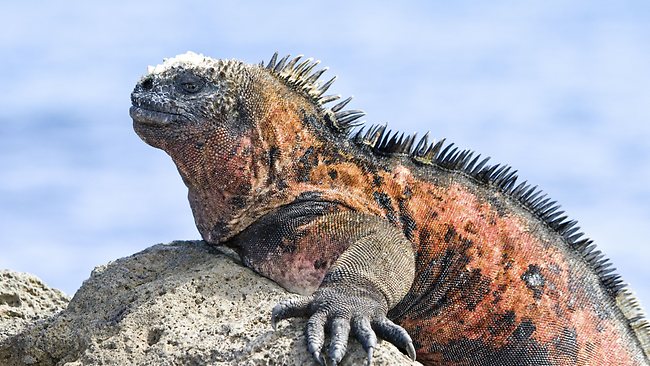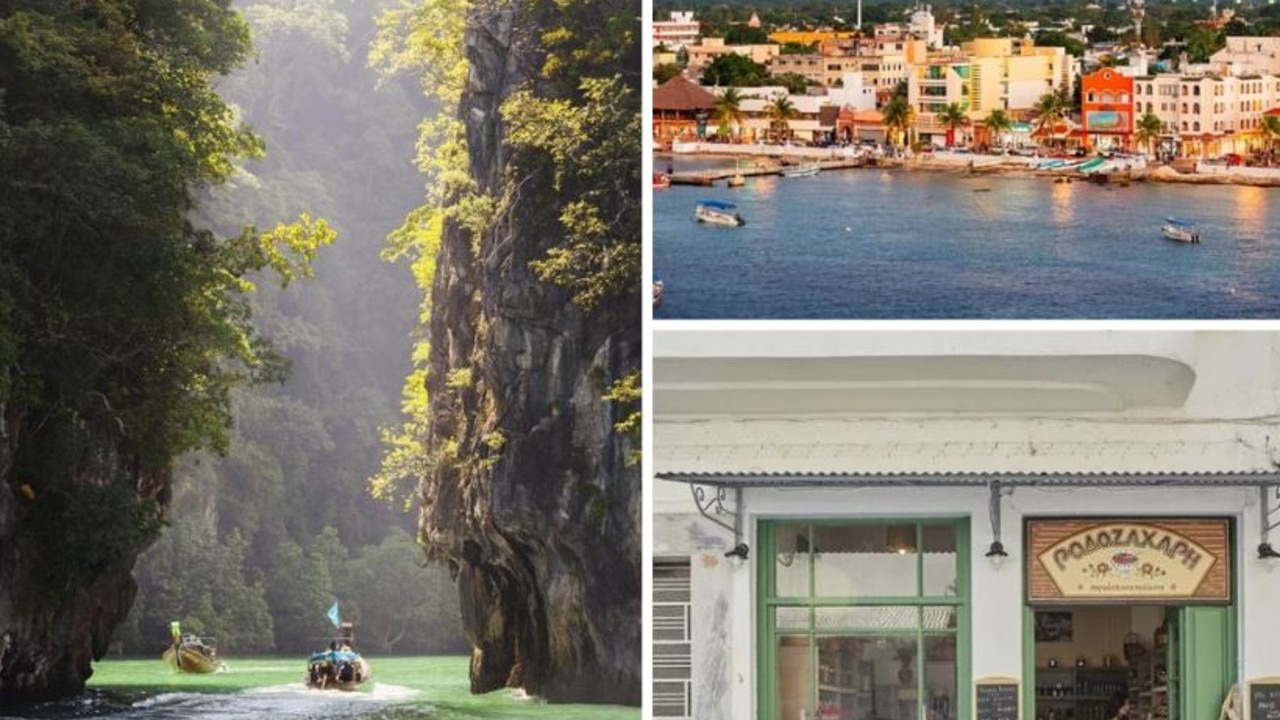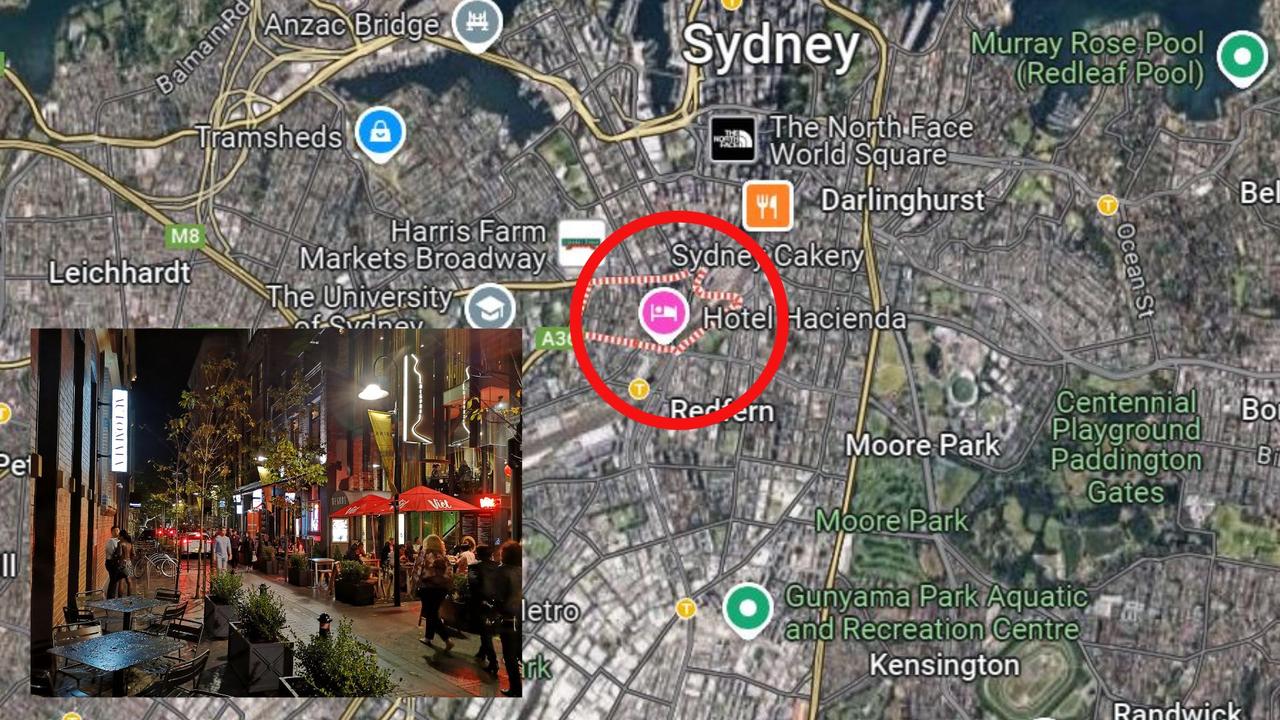Wild creatures of the Galapagos Islands
PLAYING catch with a sea lion cub using a sea cucumber is an intoxicating experience in the wildlife-rich Galapagos, writes Nick Saxon.

OF COURSE, by day five I knew that I was somewhere special. But even so, I was unprepared for the amazing experience that rocketed my Galapagos trip from special to incredible.
It was after lunch and we'd hit the water for our final snorkel session. Almost immediately, I spotted him - a small sea lion cub darting and spinning through the water, only a dozen or so metres from our party. I swam closer. He was playing with a small sea cucumber - a slug-like creature that resembled a bone to this pup. He was diving and swimming, up and down, with the cucumber in his mouth, much like a dog would race around a garden with a floppy toy.
I swam to him, slowly, I didn't want to spook him. He noticed me but barely acknowledged my presence - just kept on playing with his toy. I began to mimic his movements underwater, spiralling down too, and flipping on to my back then over on to my belly. Now, he began to take notice, following my movements and adding his own as if challenging me to come play. I started to wonder what would happen if I grabbed his toy - would he get upset and disappear or would he let me join his game?
So, the next time he let it go, I took a deep breath, moved in quickly and picked it up. He was almost delirious with excitement, his movements were rapid and dramatic as though he was saying, "throw it to me, throw it to me!" I held it out, let it go, and he fetched it in his mouth.
Amazing. He swam around me smiling with delight.
An intoxicating experience, made all the more amazing when you consider that I was about as far from Australia as it's possible to get. Plane changes in Auckland, Santiago and Quito on the Ecuadorean mainland meant a 30-hour travelling day. But totally worth it.
The Galapagos is a cluster of volcanic islands - 15 main islands and three smaller - distributed around the Equator in the Pacific Ocean, 972km west of continental Ecuador. Geologically young and famed for their vast number of endemic species, studied by Charles Darwin during the voyage of the Beagle, they contributed to Darwin's theory of evolution by natural selection.
In 1986, the 70,000sq km of ocean surrounding the islands was declared a marine reserve, second in size only to Australia's Great Barrier Reef.
The best way to see these unique islands is from the sea. We boarded our ship, the Beluga, on the island of Santa Cruz. It's a great little boat with only eight cabins, sleeping a total of 16 people. That's the perfect number so the deck space never gets crowded.
Each day starts with an epic breakfast of tropical fruit and cereal, before we hop into dinghies and set out on safari.
On day one, we snorkel off Isla Bartolome - huge schools of trevally, gliding rays and beautiful trumpet fish swim around us in water that is surprisingly fresh considering the proximity to the Equator. On the island itself there are sea lions, blue-footed boobies and iguanas, lazing in the sun as if to welcome us to their paradise and presenting the perfect photo op. I approached a couple of the sea lions that were chilling on the beach. These guys were extremely tame - they barely blinked an eyelid as we snapped away with our cameras. One little fella was pretty curious and seemed to want to play tag - he chased us around the beach for the next half-hour.
Now, the islands themselves are often quite barren. In places they reminded me of scenes from old western movies, with their scrublands of scattered cactus. This has aided the development of the Galapagos's unique ecosystem because they're relatively inhospitable for human habitation, though today there's a permanent population of more than 20,000 people servicing the tourism and scientific communities.
One of the most spectacular islets is Kicker Rock, an ancient rock formation where the middle of the rock has fallen away, creating a canyon that's filled by the Pacific.
During my swim, I floated along through the channel, my hands brushing the steep walls of the rock formation. In the clear water you can see the walls as they extend below the surface, lined with colourful mosses and plants. After a few laps I spotted a school of eagle rays gliding below me. It's easy to see how these creatures got their name: they're incredibly graceful, with fluid, bird-like motions as they flap through the water.
Further down, cruising beneath the eagle rays, was a pack of reef sharks. They barely noticed our presence as they drifted over the floor of the canyon. And then, just when I thought it couldn't get any better, a beautiful Galapagos sea turtle came floating up to me. He was a curious critter, completely unperturbed by my intrusion into his domain, and swam along beside me, barely an arm's span away, until he'd had enough and glided off into the depths.
It's moments like those that take a visit to the Galapagos Islands beyond special. Yes, there are times when it feels as if you're in a scene from Jurassic Park. But here's the thing: Jurassic Park is a fantasy, while the Galapagos are real. They're the islands where fantasy becomes a reality. I mean, where else on the planet could you imagine playing fetch with a wild sea lion pup? It was a pretty unforgettable experience. For 20 minutes we weren't two different species, just two mates catching and chasing and frolicking in the sea. And when it was time to go, I got the distinct impression I wasn't the only one torn at the parting.
But then that's the Galapagos: go and you won't want to leave. It's a pretty special kind of place.
------------
Go2
- GALAPAGOS ISLANDS
- Getting there
LAN Airlines flies from Sydney to Santiago, Chile, via Auckland, and on to San Cristobal and Baltra in the Galapagos Islands, and direct in a code-share partnership with Qantas.
Ph 1800 558 129 or visit lan.com
- Touring there
The eight-day Galapagos Islands tour on Beluga costs $4390 a person (excluding international flights). The Galapagos archipelago is a spectacular and striking world of volcanic landscapes and amazing bird and wildlife and the Beluga is the perfect way to appreciate it.
More: worldexpeditions.com or ph 1300 720 000.
---------
"Like" Escape.com.au on Facebook
Follow @Escape_team on Twitter



